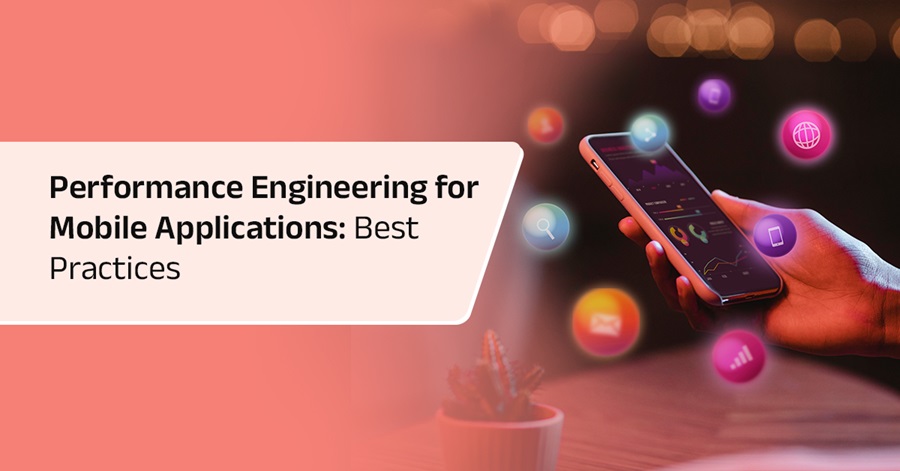Modern people can't spend a day without smartphones, and businesses have understood this very well! Mobile apps have become an effective channel for reaching customers. However, their distributed nature and delivery networks may cause performance problems.
Performance issues in mobile devices can frustrate users, who may turn to competitors. A study involving more than 1,000 individuals from the United States, conducted by QualiTest, revealed that 88% of respondents would quit an application if they faced any issues or malfunctions.
41% of these individuals indicated they might discontinue using an app if they encountered a bug at least once daily. Additionally, 32% of all participants mentioned they would likely stop using an app when they came across a glitch. So, what's the solution for businesses that target mobile users?
Performance engineering can be a solution.

Performance engineering is a comprehensive approach to ensuring software apps work well and meet performance goals. It covers many things, like testing how the app performs and tweaking it to make it faster, more stable, and more efficient. For mobile apps, this means checking how the app performs when used in different situations and optimizing its performance to handle real-world usage effectively.
Adopting best practices for mobile application performance engineering ensures that applications provide the best possible experiences for users across different scenarios. These strategies help detect and fix performance problems before they occur, improving the app's reliability and user satisfaction.
1. Implement a Comprehensive Performance Testing Strategy
A clear performance testing plan is crucial for identifying and addressing potential performance issues. This plan should cover different types of tests, such as load testing, stress testing, and endurance testing. Load testing checks how an app works when it's used by users simultaneously, while stress testing looks at how it behaves under extreme conditions. Endurance testing checks how the app performs over a long time.
Using performance testing services ensures your app can handle real-world usage scenarios. By adding these tests to the development lifecycle, organizations can proactively tackle performance issues before they impact users.
2. Leverage Load Testing Services
Load testing services are pivotal in comprehending an application's performance across diverse demand scenarios. By simulating various user traffic levels, load testing facilitates the identification of performance bottlenecks and opportunities for enhancement. This methodology offers valuable insights into the application's behavior under standard and peak load conditions, enabling developers to implement the required adjustments.
3. Optimize Application Performance Testing
Performance testing for applications is about assessing their efficiency in speed, quickness, and reliability. This testing type is essential for ensuring the application offers a seamless experience for users on various devices and in different network environments. Developers can identify and address problems such as slow page loading, delayed responses, and system failures through consistent performance evaluations.
Implementing a performance testing approach combining automated and manual methods can offer a thorough understanding of an application's performance. Automated tests are efficient at testing a broad spectrum of situations, whereas manual testing is useful for finding problems that automated tests might not detect.
4. Focus on Web Services Performance Testing
Apps frequently depend on web services for their back-end operations. As a result, it's essential to check how well these services perform to prevent them from slowing down the app. Performance testing of web services includes checking how quickly they respond, how dependable they are, and how well they can handle increased workloads.
By utilizing performance engineering tools to test web services, it's possible to pinpoint problems with how APIs work, how fast servers reply, and how quickly data is processed. Solving these problems ensures that the back-end services don't adversely affect the app's overall performance.
5. Utilize Performance Engineering Services
Performance engineering services offer important insights and resources for boosting application efficiency. These services are designed to pinpoint problems in app performance, suggest enhancements, and implement measures to boost the app's efficiency. By collaborating with a provider that provides performance engineering services, you can benefit from their expertise and resources to attain peak performance for your mobile app.
Integrating performance engineering solutions into your development workflow can result in notable enhancements in app efficiency. These services can help with activities like performance optimization, app capacity planning, and real-time monitoring, guaranteeing that your app functions at its best under different scenarios.
Conclusion
Performance engineering plays a pivotal role in developing high-quality mobile applications, ensuring they provide a seamless user experience. An effective performance testing methodology not only boosts user satisfaction but also contributes to the sustained success of mobile applications. By adhering to these best practices, organizations can secure improved performance outcomes, leading to heightened user engagement and reduced abandonment rates.
